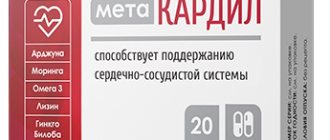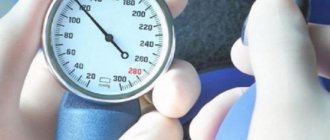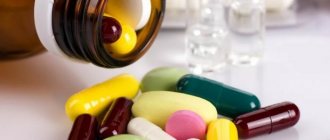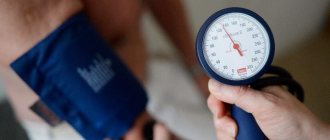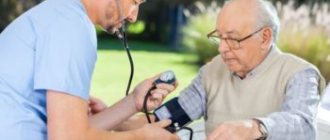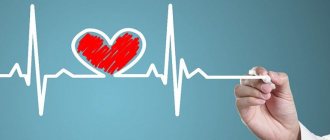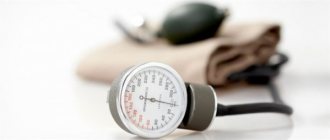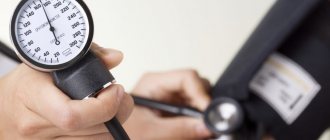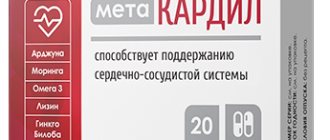The first drug with 2000% bioavailability
As long as you wait, your chances of getting rid of hypertension are decreasing!
To learn more…
By measuring blood pressure, people can obtain approximate information about their overall health status, as well as the functioning of the cardiovascular system. Any deviation from the norm indicates certain malfunctions in the body. It is recommended not to delay the examination and immediately undergo medical diagnostics, which allows you to determine the development of the disease and eliminate the problem in a timely manner. In general, a pressure of 110 over 100 does not indicate serious illness; the problem is an increased diastolic (lower) reading.
Doctors have recently begun to pay attention to diastolic blood pressure. Previously, doctors believed that the main value was the systolic (top), but studies have shown that it is important to consider both limits. In medicine, pressure is 110/100 mmHg. Art. called isolated diastolic hypertension.
Why do you need to know your blood pressure?
Regular blood pressure monitoring gives an idea of a person’s health status and the functioning of their cardiovascular system. The slightest deviations from the boundaries of the norm can indicate pathologies in time. Therefore, it is recommended to immediately undergo a medical examination, find the cause of the failure and quickly eliminate it before it leads to serious consequences.
Do not self-medicate. Consult a specialist:
When measuring blood pressure, health status is assessed using several values:
- The upper indicator will tell you about the work of the heart and blood vessels. The norm is 110-139 mm Hg.
- The lower indicator shows the functioning of the kidneys and adrenal glands. The norm is 60-89 mm Hg.
- Pulse pressure is the difference between systolic and diastolic pressure. The norm is 30-40 mm Hg.
At the same time, pressure may not always be stable, and its indicators may change depending on the general condition, external factors (weather conditions, time of day), the use of certain medications, and human activity. However, you need to monitor the pressure numbers, and if significant deviations from the norm appear, then it is important to exclude any pathologies.
You get promotional code OZON - 300 points for your first order. OZONAPIE1I (applied in the cart)
An increase or decrease in pressure also depends on the thickness and coagulability of blood and the functioning of the cardiovascular system. Small changes can be caused by: height, weight, age, presence of pathologies, physique, hormonal levels.
Other reasons for indicators
If the person measuring blood pressure recorded an upper reading of 100 and a lower reading of 100 mm Hg, do not immediately panic. Especially if previous measurements showed normal results, or with slight deviations in systole and diastole.
Perhaps the problem is that the tonometer is broken:
- Incorrect operation of the measuring unit - a strange result was recorded due to damage to the cuff or tubes.
- Incorrect display of results - if the measurement is performed using an automatic or semi-automatic device, the numbers on the display may be partially reflected. For this reason, a person sees incorrect indicators.
- Incorrect functioning of the electronic part - here, a distorted recording of the result may be associated with a discharged battery of the tonometer, or a short circuit in the electronic part.
Not only a breakdown of the tonometer can explain the appearance of strange numbers when measuring blood pressure.
The second reason is a violation of the correct technique of the measurement process itself. For example, automatic devices are equipped with marks that indicate how to correctly position the cuff on the arm in relation to the arteries. At the location of this mark there is a sensor that reads data: if the cuff is placed incorrectly, the blood pressure readings also change in the wrong direction.
The tonometer may also give an error due to problems with pumping air into the cuff. In automatic devices, the process occurs arbitrarily; here the problem lies in the breakdown of the boost pump. Semi-automatic and manual models can give a result of 100/100 due to pumping or, conversely, lack of air in the cuff.
If pressure is measured using a manual tonometer, a person may make a mistake in determining the results, since automatic models themselves produce the final numbers. Another reason for incorrect blood pressure measurement results is a violation of the procedure algorithm. When a person talks, laughs, is in a moving position or touches the cuff during the measurement, the result will also be distorted.
What to do in such a situation
When a tonometer produces 100/100 results, it is important to make sure that these indicators are correct and that no errors were made during the measurement. If there is any doubt about the reliability of the final figures, the measurement should be carried out several more times, following the instructions. You should also make sure that the tonometer is in good working order: inspect it externally; perhaps damage will be found on the tube or cuff; if necessary, on the automatic model, you need to change or charge the battery.
Another option is to measure your pressure with a second tonometer, if you have one at home, or ask your friends (neighbors) for one. You should take any measures and contact a doctor if the second machine also recorded the numbers 100/100, and before that you should not panic, especially if there have been no previous complaints about strange readings from the device. As it became clear, blood pressure readings of 100/100 are not a reason to immediately suspect a serious illness.
If the numbers seem strange when measuring pressure readings, it is worth repeating the measurement using another tonometer
Initially, you need to make sure that the tonometer produces the correct numbers when measuring. If such indicators are recorded more and more often, you should not treat yourself or completely ignore the symptoms. Such tactics will lead to undesirable consequences, aggravate existing health problems and harm the patient. Competent drug treatment, coupled with lifestyle changes, diet and moderate physical activity will help stabilize blood pressure and prevent dangerous consequences.
What causes a blood pressure of 110 over 100?
The reasons for pressure 110 to 100 may be:
Long-lasting
- Kidney pathologies. This may be thromboembolism (formation of a blood clot and blockage of an artery), pyelonephritis (inflammation of the kidneys), etc.;
- Endocrinological diseases – pathologies of the adrenal glands and thyroid gland;
- Vascular diseases (atherosclerosis).
Short term exposure
- Heavy and regular loads;
- Extreme heat and poor adaptation to it;
- Stressful and depressive situations;
- Insomnia, insufficient rest;
- Improper and unbalanced nutrition;
- Excessive consumption of strong coffee, tea and alcoholic beverages.
Let us list the main causes of pressure 110 to 100, which are associated with age-related changes, and therefore cause isolated diastolic pressure in older people:
- Increased arterial tone, which occurs as a result of stress or pathologies during the transmission of nerve impulses;
- Increased production of biological substances in the body that cause increased blood pressure (norepinephrine, renin, serotonin, etc.);
- Reduced mechanisms of depressant action;
- Atherosclerosis.
The most dangerous situation is when the above reasons contribute to the development of an isolated form of diastole.
How to normalize blood pressure
Usually doctors do not prescribe drug treatment right away, but try to make do with physiological changes in a person’s life. The patient is recommended to follow a diet with the exclusion or limitation of the amount of table salt, smoked, over-salted and spicy foods. You should also avoid fatty foods to reduce blood cholesterol levels and prevent the development and complications of atherosclerosis.
Regular physical activity is recommended for hypertensive patients, but not too intense, so as not to provoke a crisis of the disease. You can do swimming, yoga, jogging, or just take a daily walk in the fresh air. At the same time, you need to limit your caffeine intake - it is found in tea, coffee, and energy drinks. If the patient is overweight, you need to consult a nutritionist and try to reduce it, since obesity is considered the main concomitant of hypertension.
An important point is the prevention of stressful and conflict situations; it is not for nothing that doctors and people themselves say that all diseases are caused by nerves. During times of stress, the level of adrenaline in a person’s blood increases, which causes vasoconstriction and blood pressure to rise. If the cause of hypertension lies in psychosomatics, you can contact a psychologist or psychotherapist to find the root of the problem and eliminate it.
If drug treatment is necessary, the following is prescribed:
Drops for hypertension
- Diuretics – Veroshpiron, Furosemide, Hypothiazide, Triamterene. They are part of the complex therapy of hypertension, help reduce blood pressure, eliminate edema and normalize heart function.
- Alpha adrenergic blockers – Terazosin, Prazosin. Drugs in this group are well tolerated by patients and also help reduce elevated blood pressure.
- Beta blockers - Bisoprolol, Nadolol, Atenolol, Metoprolol. These drugs act on the nerve centers that control the functioning of the heart muscle, thereby reducing the heart rate. It operates in economical mode, the pressure drops.
- ACE inhibitors – Captopril, Enalapril, Fozinopril. After taking drugs of this group, the production of the hormonal substance angiotensin, which helps to increase blood pressure, is blocked.
- Calcium antagonists - Verapamil, Plendil, Nifedipine. Also used in the complex fight against arterial hypertension, they help expand narrowed capillaries and normalize tonometer readings.
No ads 3
The main problem that arises in the treatment of such pathologies is considered to be the simultaneous decrease in both upper and lower pressure values as a result of taking antihypertensive drugs. Therefore, doctors practice prescribing several medications at the same time in order to maintain systole and diastole within acceptable limits.
If a patient has a problem with blood pressure due to nervous overload and stress, he is advised to take sedatives and herbs. These are tinctures of valerian, motherwort, evasive peony, drugs Corvalol, Persen, Novo-passit, Nervohel. In severe cases, antidepressants are prescribed.
Drugs to treat high blood pressure
Symptoms
As a rule, with a pressure of 110 per 100, a person may not feel symptoms of pathology, that is, the general condition remains at the same level. And often the problem is discovered by chance during a routine or diagnostic examination of the patient. But if this problem is not detected for a long period of time and the person experiences isolated diastolic pressure for a long time, then the following symptoms of the disease may appear:
- Dizziness, headache (throbbing), tinnitus.
- Cardiopalmus.
- Flickering of flies before the eyes, decreased visual acuity.
- Nausea, vomiting.
- Shortness of breath (often after increased physical activity), harsh breathing.
- Bleeding from the nose.
Why is this condition dangerous?
As a result of the fact that blood pressure readings are at 110/100, the heart and blood vessels are under enormous stress. The heart muscle cannot relax completely, it is constantly tense, and blood circulation and blood supply are disrupted. The vessels begin to experience a lack of blood. The walls of the arteries become thin, muscle tissue is replaced by hyaline. Tissues and organs receive insufficient nutrients due to oxygen starvation.
Over time, atherosclerotic plaques appear and can fill the entire inner surface of the arteries. At a certain point, the lumen of the blood vessels may close completely.
Is it dangerous?
Close systolic and diastolic pressure puts a lot of stress on the blood vessels. Some arteries do not receive the necessary nutrition, while others suffer from an excess of blood.
Don't tolerate high blood pressure
Now hypertension can be cured by restoring blood vessels...
>
With the same values, the heart cannot stand it and stops because blood circulation completely stops.
If blood pressure levels are not normalized for a long time, the likelihood of developing a heart attack, stroke, internal blood loss, and disruption of the heart valves increases. If you feel unwell, the difference is 10 units or less, you must immediately call an ambulance. Home treatment will not help stabilize the condition.
What complications may arise?
If the pressure of 110 to 100 is observed for a long period of time, then threatening conditions may arise:
- Atherosclerosis.
- Chronic renal and heart failure.
- Hypertension.
- Stroke.
- Aortic aneurysm.
- Stagnation of blood. If it occurs in the systemic circulation, then the legs swell, then the whole body and cirrhosis of the liver gradually develops.
- Pulmonary edema.
All of these conditions can lead to serious consequences, often fatal. For this reason, you need to be attentive to the slightest signals from your body and if your lower blood pressure readings increase, be sure to contact a therapist or specialist (cardiologist) for a medical examination.
Under no circumstances take antihypertensive drugs on your own, as they reduce blood pressure completely and not in isolation. This can significantly lower systolic blood pressure, which is normal.
Prevention
What methods of preventing hypertension exist? It has been reliably proven that lifestyle correction delays the onset of arterial hypertension to a later date, and its course is much easier. Therefore, primary and secondary prevention measures are almost the same and include:
weight loss;- increased physical activity;
- reducing salt intake;
- correction of dyslipidemia;
- giving up bad habits - smoking and alcohol;
For secondary prevention of hypertension, regular intake of antihypertensive drugs and properly selected basic therapy are also important. If you follow your doctor’s recommendations, but your blood pressure still rises, this is a reason to contact your doctor to change your therapy.
Remember, preventing a disease is always easier than treating it!
What to do?
Let's consider the main stages of actions that are aimed at providing first aid to a patient with a blood pressure of 110 to 100:
- Create a calm environment and calm the patient (you can drink Corvalol or valerian).
- Take a comfortable position. You need to sit down (place a bolster or pillow in the lumbar region) or lie down (with your head raised).
- Provide fresh air access to the room.
- If painful phenomena appear in the heart, it is recommended to take nitroglycerin.
- A cold compress on the neck area often helps (no more than 15 minutes), but after this procedure you should definitely do a small neck massage to restore blood flow.
- Make a warm foot bath (duration about 10 minutes).
Features of treatment
Any symptom of hypertension is considered dangerous because its consequences are unpredictable. Therefore, if it occurs:
- prolonged dizziness;
- disorientation in space;
- migraine with nausea;
- syncope (fainting);
- tachycardia or bradycardia;
- unruly legs and arms;
- facial asymmetry;
- chest pain of varying intensity;
- neurological symptoms - you need to call an ambulance.
Before the doctors arrive, there is very little that can be done at home.
First aid
First of all, you need to calm the patient down. Then:
- help him take a comfortable position;
- open the window, loosen tight clothing;
- measure blood pressure.
You can take medications only if you already have a proven regimen for stopping the attack. You can reduce lower pressure without affecting the upper if:
- take a quarter of a Captopril tablet;
- Verapamil tablet or another calcium antagonist;
- No unnecessary movements, basins of hot water, cold douches are allowed.
Upon arrival of doctors, you should agree to hospitalization.
Medicines
The treatment regimen is selected by the doctor depending on the individual characteristics of the person; the following drugs are most likely to be used:
| Group of drugs | Mechanism of action |
| Diuretics (Veroshpiron, Spironolactone, Triampur) | Remove excess fluid from the body, reduce tension in the vascular bed, lower blood pressure |
| Adrenergic blockers (alpha: Doxazosin, Yohimbine, Nicergoline, beta: Atenolol, Bisoprolol, Norvasc) | Reduce arterial tone, affecting endothelial receptors, reduce heart rate, leading to a drop in lower blood pressure |
| ACE inhibitors (Losartan, Telmisartan, Rasilez) | Block the production of biologically active substances that stimulate vasospasm, reducing DBP |
| Calcium antagonists (Amlodipine, Verapamil, Felodipine) | They stop the flow of ions that potentiate vasospasm, cause dilatation of the arteries and a fall in the lower marker |
Isolated arterial diastolic hypertension is insidious, it is difficult to find effective therapy, therefore they use a combination of drugs from different groups and folk recipes, among which the most effective are herbal decoctions:
- bearberry;
- lingonberry leaves;
- rowan.
In addition, tincture of horsetail and pine cones is used. Only regular use of these medications can lower your lower blood pressure.
Treatment methods for blood pressure 110/100
Non-drug methods
To maintain blood pressure within normal limits, the following recommendations must be followed:
- Reduce table salt consumption. It is better if it is iodized salt and no more than 3 mg per day. You also need to reduce your sugar intake.
- Increase physical activity. This could be the gym, race walking, roller skating, ice skating, if you don’t like sports, then take up dancing, but movement and everyday activity should be present in your life. It is also advisable to perform physical exercises in the fresh air, this improves blood circulation faster and saturates the organs and tissues with the necessary oxygen.
- Maintain a work and rest schedule. Even if you are very busy, be sure to find and set aside time to relax. If you have a sedentary job at a computer, then take regular breaks - walk around, stretch your bones, squat to restore blood circulation and eliminate the possibility of blood stagnation. It is wrong if, after working at the computer, you decide to relax by watching a movie on TV, your brain will not rest, but will continue to be in a tense state. As a result, additional and completely unnecessary information can lead to increased pressure.
- Eliminate bad habits. Smoking, alcoholic drinks and even an extra cup of strong coffee (it is recommended to drink no more than 2 cups of coffee in the first half of the day) can trigger the development of hypertension.
- Follow a diet. Do not overeat in the evening, especially at night; this often leads to a strong increase in blood pressure the next day - in the morning, at this time cases of strokes and heart attacks are recorded. In addition, excess food leads to obesity, which means increased blood pressure, problems with the heart, blood vessels, and thyroid gland.
But you need to know that non-drug methods help only in the initial stages of the disease. As the disease progresses and complications occur, more serious treatment is required.
Treatment with drugs
- Beta and alpha blockers.
- Diuretics (diuretics) - “Xipamide”, “Hypothiazide”, “Furosemide”, etc. They can reduce the number of heart contractions.
- Angiotensin-converting enzyme inhibitors (“Captopril”, “Enalapril”). Taken for heart and kidney failure, as well as to lower blood pressure.
- Antagonistic drugs (calcium channel blockers) – “Verapamil”, “Nifedipine”. They inhibit the direction of calcium into smooth muscle cells and dilate vascular walls.
- Tinctures of medicinal herbs (for example, valerian, motherwort). Take 5-10 drops twice a day.
- Infusion of black currant, pine cones, peony, chokeberry. Mix berries and plants in equal quantities. Pour one tablespoon of the mixture into a glass of cold water and bring to a boil over heat. Then let it brew for half an hour. Drink a third of a glass before meals. This infusion will help strengthen the walls of blood vessels.
- Lemon juice and honey. Squeeze the juice of half a lemon into a glass and add 1 tbsp. honey, add warm water and stir. Drink a third of a glass a day, also before meals.
Therapy with a doctor
Your doctor will help you solve blood pressure problems with similar values. Pharmaceutical drugs are prescribed for medicinal purposes. The following diuretics are considered in demand:
- Diacarb;
- Furosemide;
- Hypothiazide.
Diuretics are prescribed only by a specialist, because along with the liquid they remove useful microelements from the body - magnesium, calcium.
Often therapy includes taking diuretics with potassium-containing drugs (Panangin, Asparkam).
If blood pressure worries only periodically, then tablets with antihypertensive properties are suitable for treatment. The most popular medications:
- Moxonidine;
- Methyldopa;
- Albared.
The above remedies restore the functioning of the nervous system, as a result of which the blood vessels narrow and spasms disappear.
To permanently normalize blood pressure, ACE inhibitors are taken:
- Enalapril;
- Ramiril;
- Perindopril.
If such medications are prescribed, the therapy will be long-term, and in some cases, the pills will have to be used for the rest of your life.
Depending on the patient’s condition and the presence of severe symptoms, the doctor may prescribe drugs from the group of beta blockers. This list includes:
- Valsartan;
- Losartan;
- Eprosartan.
Capsules are taken daily, once a day. To consolidate the positive result, it is recommended to take the medicine for 1-2 months. This medication has a minimal number of side effects. Sometimes complex treatment with different drugs that affect different systems and organs is required.
If you have chest pain, you can use Corvalment or Nitroglycerin, placing them under your tongue. It is possible to apply Corvalol drops once. Validol, motherwort and valerian are used for calming. Medicines are prescribed only by a doctor, excluding any contraindications for use.
Folk remedies for treating blood pressure 110 to 100
Unconventional methods of treatment
In the early stages of the disease or in cases where diastolic pressure rises infrequently, breathing exercises, yoga exercises, and Tibetan practice can help. You can use special breathing devices (Frolov simulator, Samozdrav).
According to many people, acupuncture point massage allows you to quickly cope with an attack of high blood pressure, which is not at all difficult to master. These techniques effectively reduce blood pressure, and with regular use help keep it within normal limits.
Control your blood pressure and be healthy!
Home treatment
Traditional medicine recipes help fight the problem of blood pressure and improve a person’s condition. To lower diastolic pressure readings:
- Birch buds. Dry raw materials are poured with a glass of boiling water and infused. The medicine is taken 3 times a day, 3 tbsp. l., before meals.
- Decoction. Elecampane and ginseng are taken in equal proportions. An excellent substitute would be pumpkin decoction with honey. Plants and vegetables increase vascular tone.
- Motherwort. Add 1 tbsp to 200 ml of boiling water. l. dried plants for 30 minutes. After steaming, the infusion is divided into 3 servings. The product should be taken in the evening, before bedtime.
Low blood pressure needs to be increased. This can be done without the use of medications. For mild forms of the disease, it is better to use the following folk recipes:
- Beverages. Strong tea, coffee, and dry red wine will improve your performance well. A piece of dark chocolate will also go well with them.
- Massage. During surges in blood pressure, strong massaging of the earlobes has a good effect on the body - until it hurts, which can be tolerated. The values will begin to decrease after 10 minutes.
- Juice. Blood pressure worries many expectant mothers. During pregnancy, it is recommended to drink birch and cranberry juice little by little throughout the day.
If there is no severe discomfort when the pressure values converge, you should try to get rid of the influence of external circumstances and bad habits.
